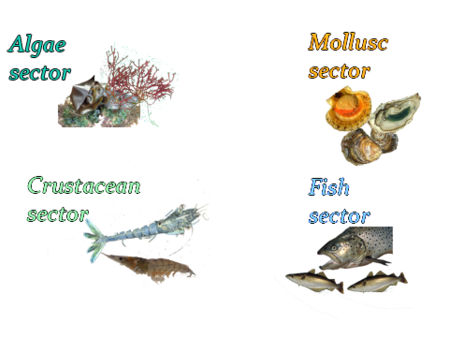Laver cultivation technique
The macroscopic individual represents the haploid generation. Upon maturity, spermatids are produced and released in the medium and it fertilizes the carpogonias. The resulting carpospores (2N chromosomes) are released in the medium and they fix themselves preferentially to a dead shellfish. Following the germination, a filament (conchocelis) forms and grows by digging galeries inside the calcareous matrix of the shell. Upon reaching the end of its development, the conchocelis produces a conchospore which has undergone the chromatic reduction (N chromosomes). The latter will be released in the medium and will germinate, thus producing a macroscopic thallus. In Asia, at the beginning of the fifties, the growth of the Porphyra cultivation made it possible to produce conchocelis filaments in tank cultivation, and to launch large scale production of conchospores in hatcheries, by seeding shellfish.
|
|
|

